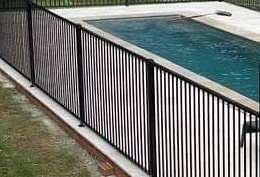Introduction
When it concerns picking the right fence for your home or company, the choices can feel frustrating. With a variety of materials readily available-- from timber paling to Colorbond, and even tubular steel-- it's vital to consider how the weather condition in your region may affect your selection. In this guide, our fencing specialists will walk you through the complexities of how climate condition affect your option https://parapetfencing.com.au/ of fencing product, ensuring you make an informed decision that stands the test of time.
How Weather Conditions Impact Your Choice of Fence Material: A Guide by Our Fencing Experts
Understanding Different Fence Materials
Timber Paling: The Classic Choice
Timber paling is a traditional fencing product that provides both visual appeal and functionality. However, it is necessary to understand how weather conditions can impact its longevity and appearance.
- Moisture Absorption: Wood is porous and can absorb moisture from rain or humidity. This absorption can result in warping, swelling, or even rot if not dealt with properly. UV Direct exposure: Prolonged exposure to sunshine can trigger wood fences to fade over time. Routine upkeep with UV-resistant paints or discolorations can mitigate this issue.
Colorbond: The Modern Marvel
Colorbond is renowned for its resilience and low upkeep requirements, making it a popular option for lots of homeowners.

- Sun Resistance: Among Colorbond's standout functions is its resistance to fading under sunshine. It maintains its color well over time. Wind Resistance: Designed particularly for Australian conditions, Colorbond fences are crafted to endure strong winds, making them perfect for coastal areas.
The Function of Climate in Fencing Decisions
Hot and Dry Climates
In regions experiencing high temperatures and low rains, particular materials fare better than others.
- Metal vs. Wood: Metal choices like tubular steel and Colorbond resist deforming under heat compared to timber. Heat Reflection: Light-colored fences typically reflect sunshine better than dark ones, keeping your home cooler.
Cold and Wet Climates
In colder areas where frost and snow are common, some factors to consider are paramount.
- Frost Resistance: Fences made from products like Colorbond or tubular steel won't break or break under freezing temperatures. Drainage Problems: Ensure that any wood fence is set up with correct drain solutions to prevent rot triggered by snowmelt.
Durability Across Seasons
Spring Showers: The Drenching Effect
Spring typically brings heavy rains that can impact particular fence products more than others:
Timber fences may swell with excess moisture. Metal fences might experience rust if not coated properly. Composite products typically provide great resistance against water damage.Protecting Your Investment: Upkeep Tips
Regular Inspections
To keep your fence in good shape regardless of the weather condition:
- Conduct seasonal inspections. Look for indications of wear such as rust on metal fences or mildew on wood.
Cleaning Strategies Based upon Product Type
Different cleansing methods apply depending upon your material option:
- For timber fencing, use a moderate soap option integrated with a soft scrub brush. For Colorbond or tubular steel, a pressure wash works marvels without harming the surface.
Design Factors to consider Based on Weather Patterns
Choosing Designs That Fit Your Area's Climate
The design style plays a significant function in how well your fence carries out in numerous weather:
Choose strong panel designs for wind-prone areas. Opt for slat fences in regions with less extreme weather that allows airflow while preserving privacy.Height Matters! Wind Tolerance by Style Height
Higher fences might offer more privacy but could also capture more wind:
|Fence Type|Recommended Height|Wind Resistance|| ------------------|-------------------|-----------------|| Picket Fence|4-6 feet|Moderate|| Slat Fence|5-7 feet|High|| Blade Fence|6+ feet|Very High|
Local Laws Affecting Your Choices
Understanding Local Building Codes
Before you embark on installing a brand-new fence, it's vital to familiarize yourself with local policies:
Setbacks from home lines might determine how close you can build. Height restrictions guarantee security requirements are met.Cost Implications Due to Weather Conditions
Initial Financial investment vs Long-Term Maintenance Cost
Consider the in advance costs against long-term maintenance:
- Timber paling may be less expensive initially however might sustain higher maintenance expenses due to weather-related issues. Colorbond or tubular steel may have higher preliminary expenses however lower long-term maintenance expenses.
FAQs About Fencing Materials and Weather Influence
Q1: What fence product lasts longest in severe weather?
A1: Normally speaking, Colorbond and tubular steel are known for their durability due to their strength against rust and fading caused by extreme weather condition conditions.
Q2: Can I use timber fencing in seaside areas?
A2: Wood fencing can be used; nevertheless, it needs special treatment against saltwater corrosion which can significantly reduce its life-span without protection.
Q3: Is Colorbond worth the investment?
A3: Definitely! It's low-maintenance and highly resilient against both severe sun direct exposure and strong winds-- a wise financial investment indeed!
Q4: How often need to I keep my wooden fence?
A4: Preferably every 2 years-- specifically after heavy rains-- to examine for signs of rot or damage triggered by wetness retention.
Q5: Do slat fences provide great wind protection?
A5: Yes! Slat fences enable air flow while still offering decent wind defense if developed properly; just guarantee they're tall sufficient based on local wind patterns!
Q6: What's the best kind of fence for privacy?
A6: Strong panel styles like blade fences use remarkable personal privacy while also standing up well versus severe winds when built correctly!
Conclusion
When thinking about how weather affect your option of fence material, take into consideration aspects like climate type, expected maintenance needs, regional regulations, cost ramifications, and total style choices. By equipping yourself with knowledge about different products-- be it traditional timber paling or contemporary Colorbond-- you'll be fully equipped to decide that lines up with both your visual desires and practical needs.
So next time you're perusing your choices at the local fencing company or searching online brochures from various fence companies-- remember this guide! It'll help steer you towards making an educated option that will stand strong against whatever Nature throws at it!